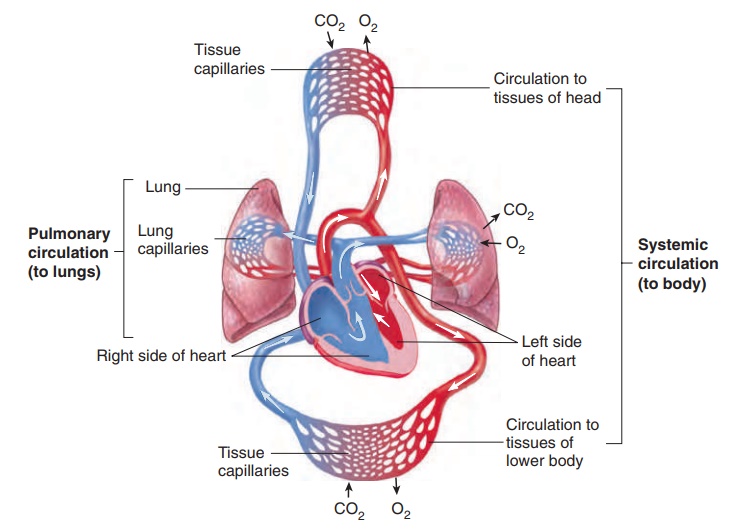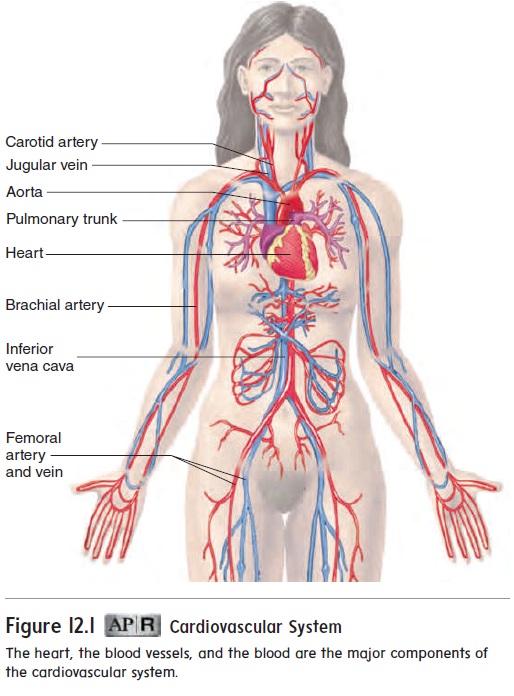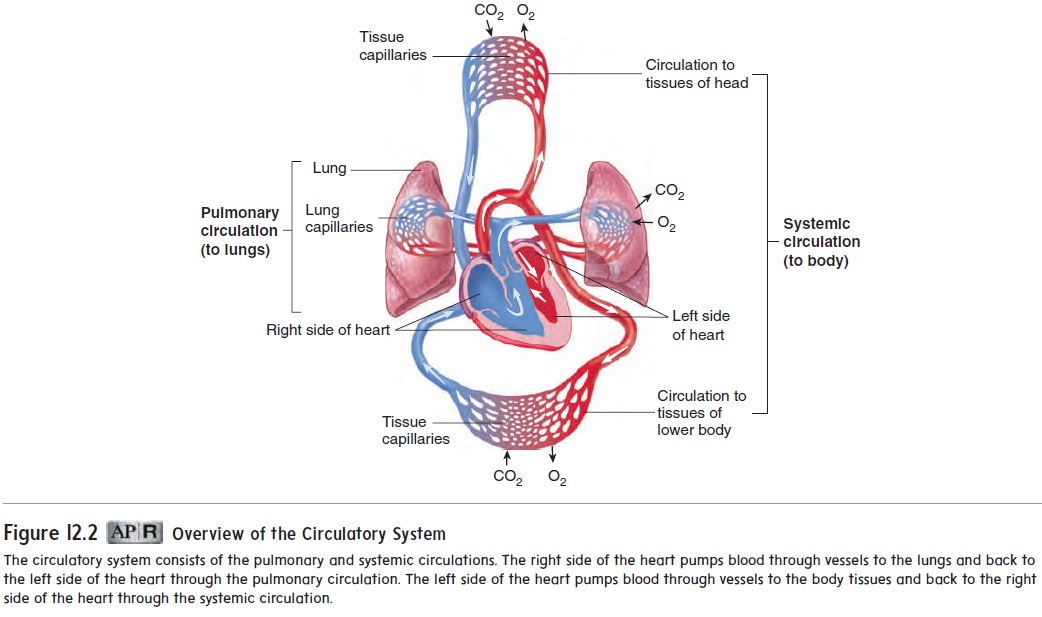Chapter: Essentials of Anatomy and Physiology: Heart
Functions of the Heart

FUNCTIONS OF THE HEART
People often refer to the heart as the seat of strong emotions. For example, we may describe a very determined person as having “a lot of heart” or say that a person who has been disappointed roman-tically has a “broken heart.” Emotions, however, are a product of brain function, not heart function. The heart is a muscular organ that is essential for life because it pumps blood through the body.
Fluids flow through a pipe only if they are forced to do so. The force is commonly produced by a pump, which increases the pressure of the liquid at the pump above the pressure in the pipe. Thus, the liquid flows from the pump through the pipe from an area of higher pressure to an area of lower pressure. If the pressure produced by the pump increases, flow of liquid through the pipe increases. If the pressure produced by the pump decreases, flow of liquid through the pipe decreases.

Like a pump that forces water through a pipe, the heart con-tracts forcefully to pump blood through the blood vessels of the body. Together, the heart, the blood vessels, and the blood make up the cardiovascular system (figure 12.1). The heart of a healthy adult, at rest, pumps approximately 5 liters (L) of blood per minute. For most people, the heart continues to pump at approximately that rate for more than 75 years. During short periods of vigor-ous exercise, the amount of blood pumped per minute increase several-fold. But if the heart loses its pumping ability for even a few minutes, blood flow through the blood vessels stops, and the person’s life is in danger.
The heart is actually two pumps in one. The right side of the heart pumps blood to the lungs and back to the left side of the heart through vessels of the pulmonary circulation (figure 12.2). The left side of the heart pumps blood to all other tissues of the body and back to the right side of the heart through vessels of the systemic circulation.
The functions of the heart are
1. Generating blood pressure. Contractions of the heartgenerate blood pressure, which is required to force blood through the blood vessels.
2. Routing blood. The heart separates the pulmonary andsystemic circulations, which ensures the flow of oxygen-rich blood to tissues.
3. Ensuring one-way blood flow. The valves of the heart ensurea one-way flow of blood through the heart and blood vessels.
4. Regulating blood supply. Changes in the rate and force ofheart contraction match blood flow to the changing metabolic needs of the tissues during rest, exercise, and changes in body position.

Related Topics